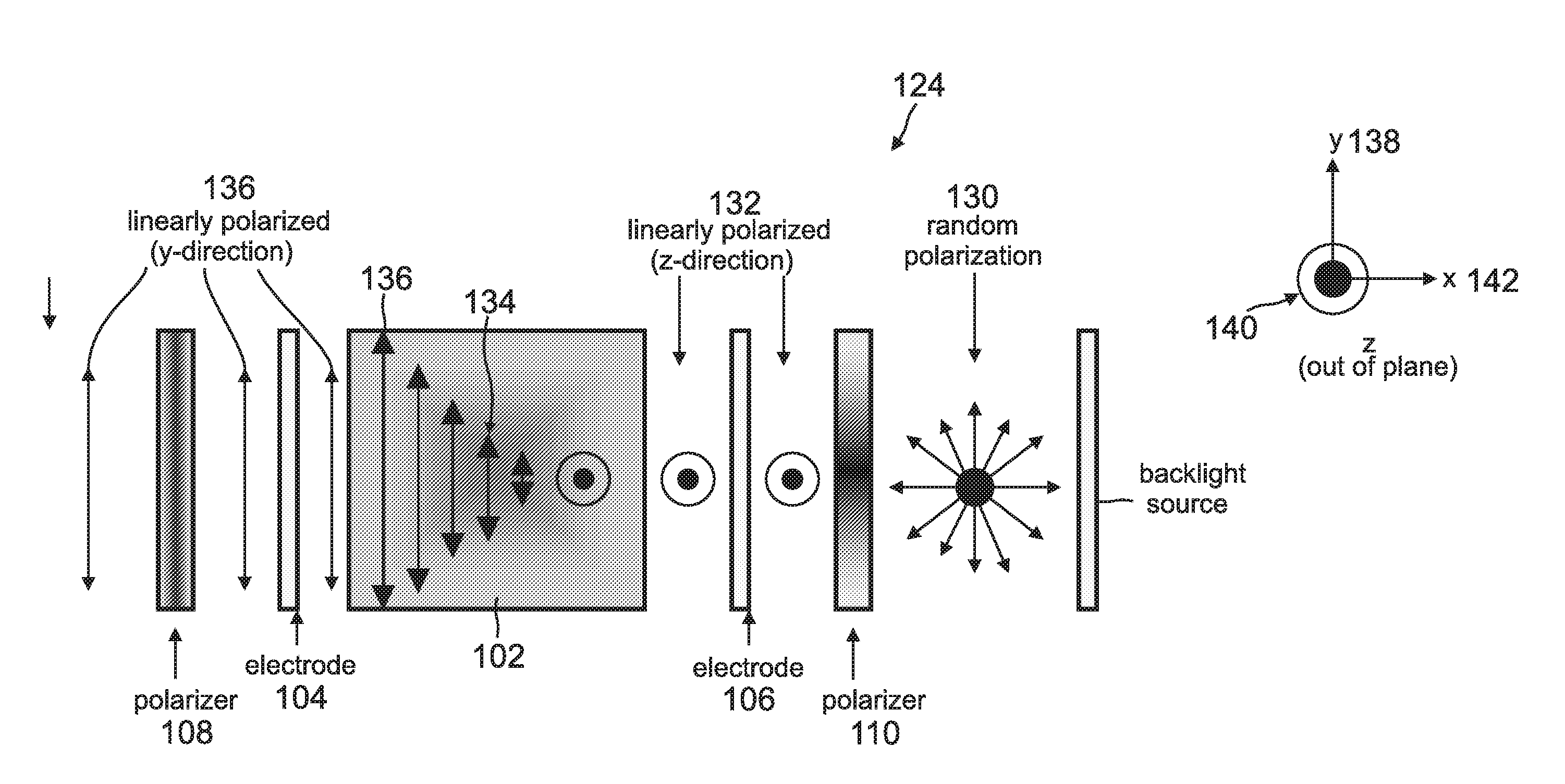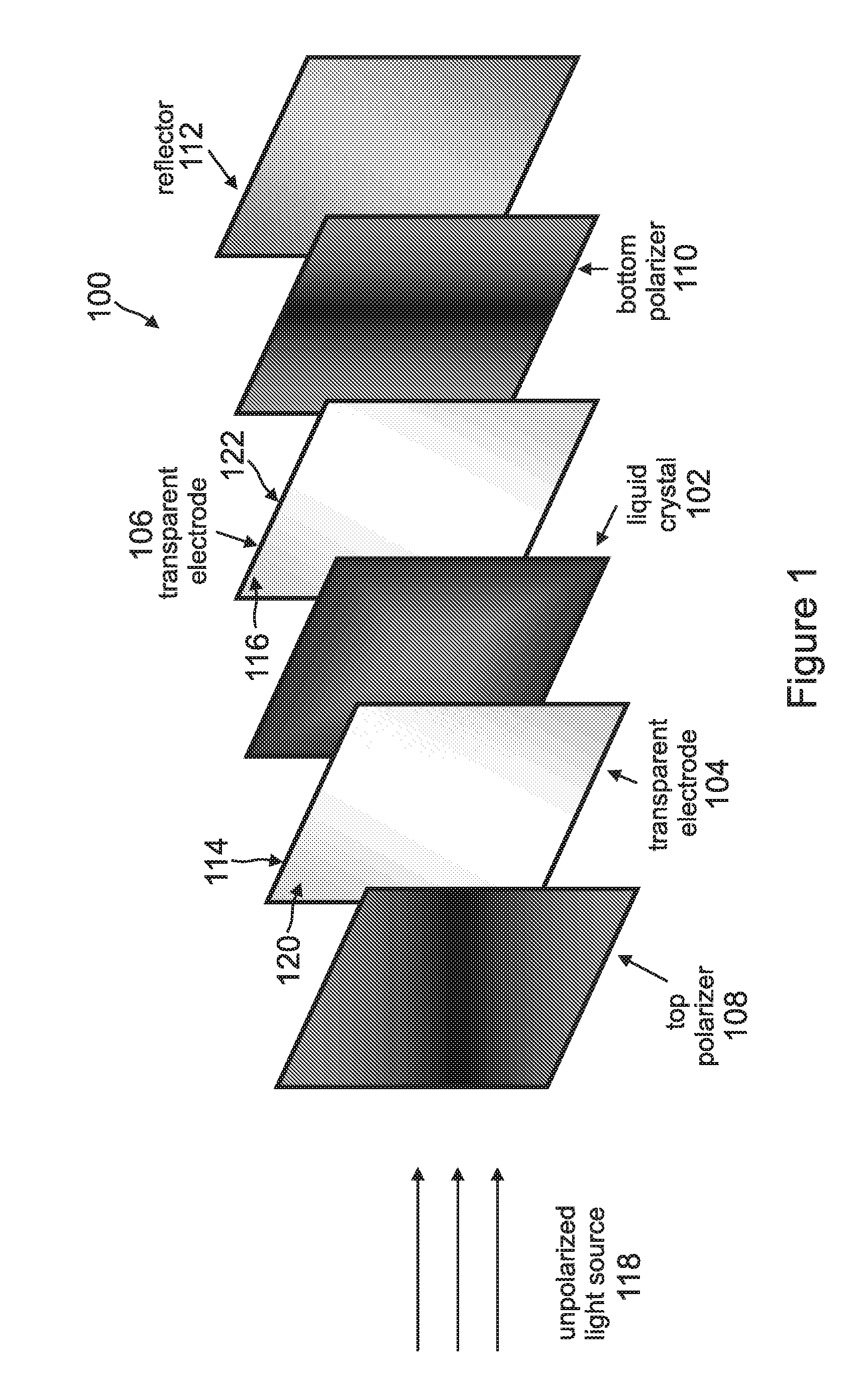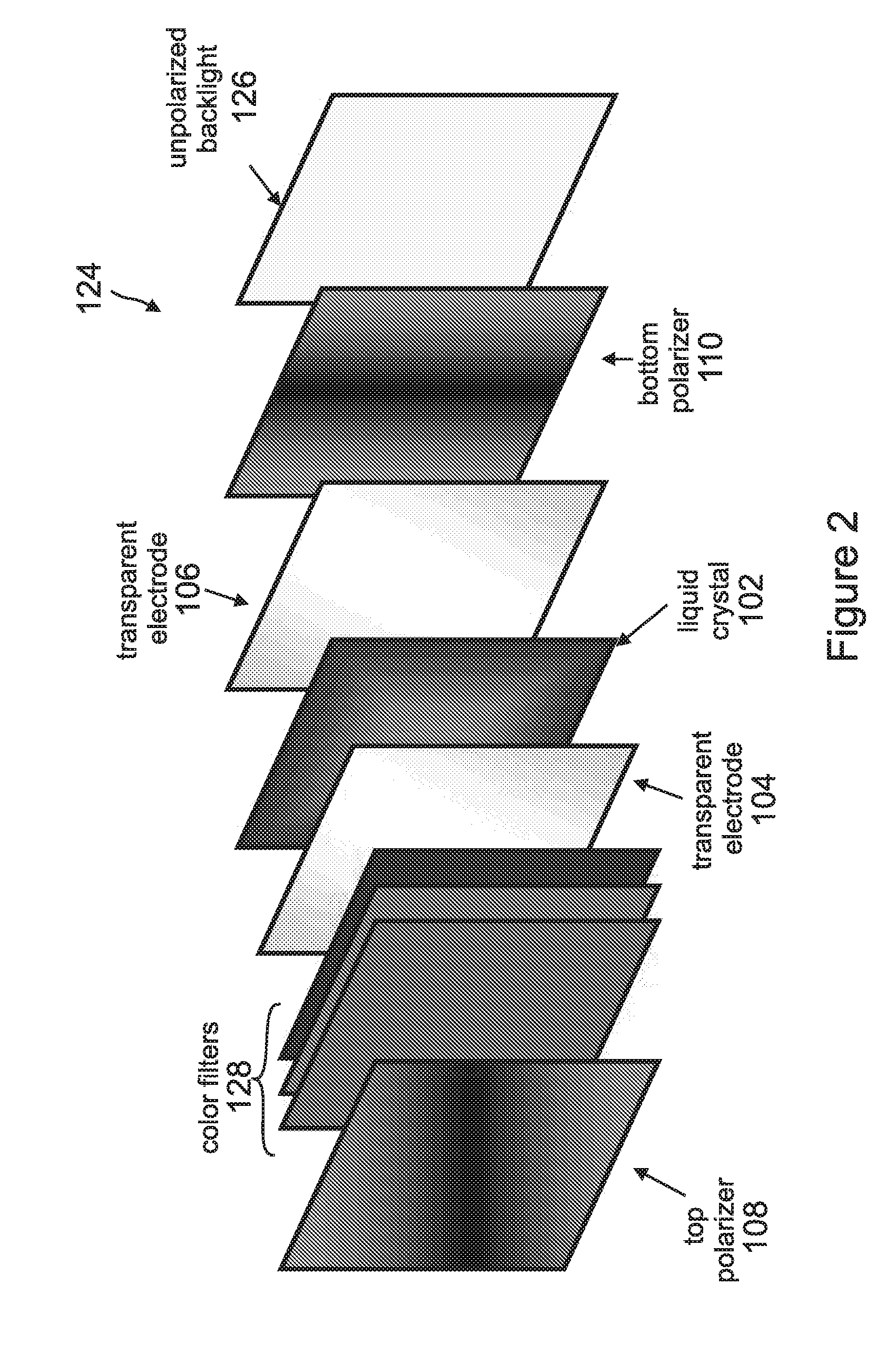Linearly polarized backlight source in conjunction with polarized phosphor emission screens for use in liquid crystal displays
a backlight source and phosphor technology, applied in the direction of luminescent compositions, instruments, semiconductor devices, etc., can solve the problems of usable light, and achieve the effect of improving the efficiency of the present invention's system, reducing the efficiency of lcd, and reducing usable ligh
- Summary
- Abstract
- Description
- Claims
- Application Information
AI Technical Summary
Benefits of technology
Problems solved by technology
Method used
Image
Examples
Embodiment Construction
[0040]In the following description of the preferred embodiment, reference is made to the accompanying drawings which form a part hereof, and in which is shown by way of illustration a specific embodiment in which the invention may be practiced. It is to be understood that other embodiments may be utilized and structural changes may be made without departing from the scope of the present invention.
[0041]Overview
[0042]The inventors performed an experiment showing that phosphor powder was only very slightly polarized. However, the inventors also performed an experiment showing the down-converted emission of a cubic single crystal (YAG:Ce3+) was 100% polarized when excited by linearly polarized light, illustrating that single crystal phosphors are beneficial in LCDs. Consequently, a single crystal phosphor can be used to fabricate an efficient LCD that eliminates one polarizer and color filters and utilizes the polarizing nature of the phosphor in conjunction with a polarizing source su...
PUM
| Property | Measurement | Unit |
|---|---|---|
| wavelengths | aaaaa | aaaaa |
| luminescent | aaaaa | aaaaa |
| OPTICAL POLARIZATION | aaaaa | aaaaa |
Abstract
Description
Claims
Application Information
 Login to View More
Login to View More - R&D
- Intellectual Property
- Life Sciences
- Materials
- Tech Scout
- Unparalleled Data Quality
- Higher Quality Content
- 60% Fewer Hallucinations
Browse by: Latest US Patents, China's latest patents, Technical Efficacy Thesaurus, Application Domain, Technology Topic, Popular Technical Reports.
© 2025 PatSnap. All rights reserved.Legal|Privacy policy|Modern Slavery Act Transparency Statement|Sitemap|About US| Contact US: help@patsnap.com



